Home > Application for issuance of the Individual Number Card > Check points of your photograph
The main text begins here.
 Check points of your photograph
Check points of your photograph

- Must be photographed within the last 6 months
- Front view, no hat, plain background
- Black and white photographs allowed
*Photos that have been edited to such a degree that it is not possible to identify a person face-to-face are not acceptable
Size
【Application by mail】
- 4.5cm (length) x 3.5cm (width)
Please write your name and date of birth on the back.
【For online application: Upload file】
- File Type: jpeg
- Color Mode: RGB Color (other modes such as CMYK not accepted)
- File Size: 20KB – 7MB
- Pixel Size: 480 – 6000 pixel width, 480 – 6000 pixel height
※Please note that images that have been edited using image editing software will not be accepted.

- – The head is turned to the side.
- – The background is not plain white or off-white.
- – Face expressions are significantly different from the natural ones.
- – There is a shadow on the background.
- – An unclear photograph which is out of focus or due to camera shake
- – A hat and sunglasses obscure unique facial features.

Note
〈Individual Number Card ID Photographs for those who cannot comply with photograph regulations for unavoidable reasons 〉
If for unavoidable reasons you are unable to take a photograph that meets the requirements of the ID Photograph, please take one of the following steps so that we make an exception and accept your photograph.
- ・Please specify the reason such as “I cannot open one eye due to illness” in the name field on the front side of the application form and send it. (You must specify the area so that we can identify the area on photographs that cannot meet the requirements.)
- ・Please contact the Individual Number Call Center (0120-95-0178) and state your Application ID.
- * The local municipal office may inquire about your circumstances when issuing your Individual Number Card.
Please note that your application may be considered incomplete if the ID Photograph does not fulfill the requirements (e.g. if it is too dark, cannot be trimmed, etc.) or for reasons other than the ID Photograph.
- ・Those who will use photographs that cover the head with the outline of the face visible for religious or medical reasons
Example
- ・Those wearing turbans, hijabs, etc.
- ・Those who wear a wig, hat, eye patch, or sunglasses on a daily basis for medical reasons
- ・Those who have bandages due to injuries, etc.
- ・Infants, persons with disabilities or bedridden persons, etc.
Example
- ・Infants, people with disabilities, and others who are unable to maintain a standing or sitting position
(A photograph may be taken from the front of the face, laying on their back on a plain, light-colored sheet.
If an assisting person is holding or supporting the subject person, be sure that the assisting person does not appear in the picture. ) - ・Bedridden persons, those with paralysis of the body or face who have difficulty in taking photographs from the front of their faces, those who cannot fix their gaze, and those who cannot open their eyes
- ・Those who have a wheelchair or tube in the photograph
The standard of correct photographs
|
|
This is the standard of correct photographs. |
Examples of incorrect photographs
Examples of photographs in incorrect sizes or not meeting the designated standard

The head is not centered in the photograph.

The head is turned to the side.
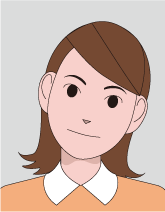
The head is tilted to the shoulders.
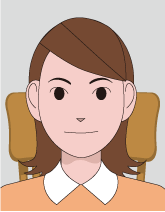
The photograph has an object such as a chair on the background.

The photograph has a shadow on the background.

The photograph has a patterned background.
Photographs in which glasses, a hair band, etc. cover a part of the face

The frame of the eyeglasses obscures eyes.

The thick frames of your eyeglasses cover the larger area of your eyes and face.

There is glare in the glasses.

The wide headband, etc. obscure the hairline.
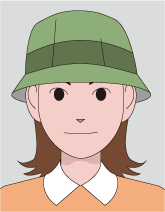
A hat obscures the hairline.

Sunglasses obscure unique facial features.
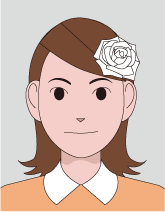
Accessories, etc. obscure the outline of the face or head.

The long front hair obscures the eyes/facial line.

Accessories, etc. cover face organs.

Hair volume is large while the face area is small.
Photographs that do not permit adequate identification

The red-eye effect due to flash, etc.

Facial expressions significantly different from natural ones
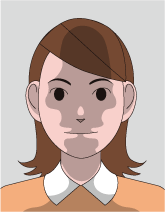
A shadow on the face

An unclear photograph which is out of focus or due to camera shake
Low-quality digital photographs

Noise in the image

Dots or ink blurring in the image

Jaggies in the image

Edited images such as deformation and masking

